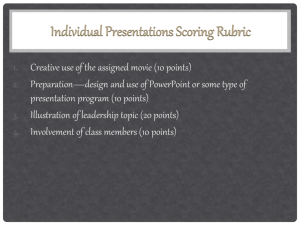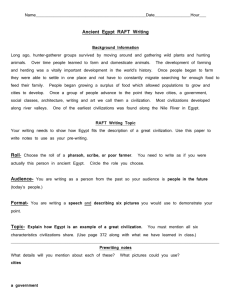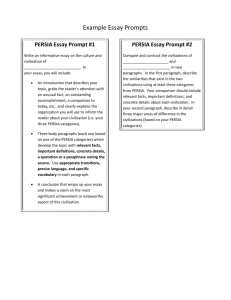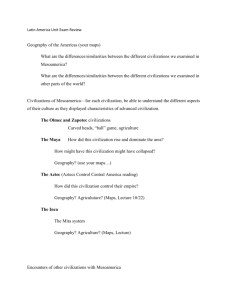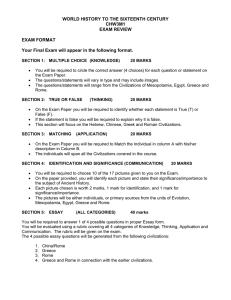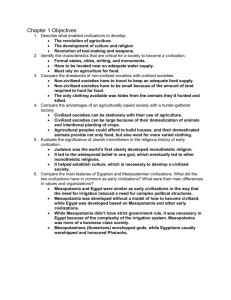Exam essay
advertisement
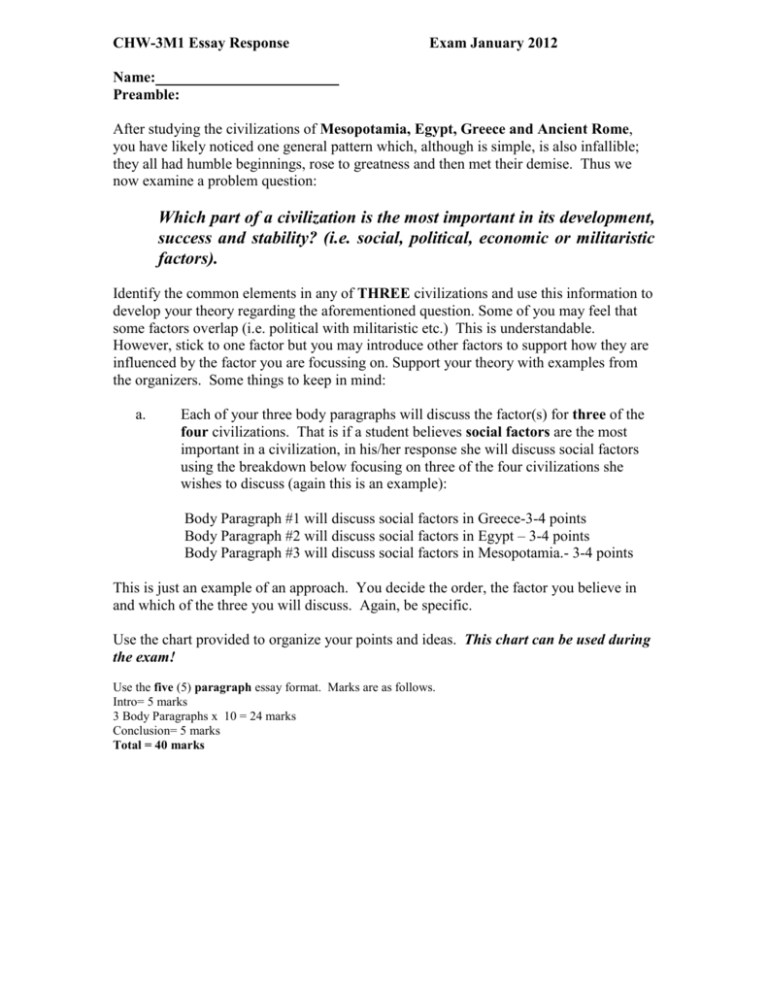
CHW-3M1 Essay Response Exam January 2012 Name: Preamble: After studying the civilizations of Mesopotamia, Egypt, Greece and Ancient Rome, you have likely noticed one general pattern which, although is simple, is also infallible; they all had humble beginnings, rose to greatness and then met their demise. Thus we now examine a problem question: Which part of a civilization is the most important in its development, success and stability? (i.e. social, political, economic or militaristic factors). Identify the common elements in any of THREE civilizations and use this information to develop your theory regarding the aforementioned question. Some of you may feel that some factors overlap (i.e. political with militaristic etc.) This is understandable. However, stick to one factor but you may introduce other factors to support how they are influenced by the factor you are focussing on. Support your theory with examples from the organizers. Some things to keep in mind: a. Each of your three body paragraphs will discuss the factor(s) for three of the four civilizations. That is if a student believes social factors are the most important in a civilization, in his/her response she will discuss social factors using the breakdown below focusing on three of the four civilizations she wishes to discuss (again this is an example): Body Paragraph #1 will discuss social factors in Greece-3-4 points Body Paragraph #2 will discuss social factors in Egypt – 3-4 points Body Paragraph #3 will discuss social factors in Mesopotamia.- 3-4 points This is just an example of an approach. You decide the order, the factor you believe in and which of the three you will discuss. Again, be specific. Use the chart provided to organize your points and ideas. This chart can be used during the exam! Use the five (5) paragraph essay format. Marks are as follows. Intro= 5 marks 3 Body Paragraphs x 10 = 24 marks Conclusion= 5 marks Total = 40 marks Civilization Social (3-4 points) Political (3-4 points) Militaristic (3-4 points) 1. Economic (3-4 points) 1. 1. 1. 2. 2. 2. 2. 3. 3. 3. 3. 4. 4. 4. 4. 1. 1. 1. 1. 2. 2. 2. 2. 3. 3. 3. 3. 4. 4. 4. 4. 1. 1. 1. 1. 2. 2. 2. 2. 3. 3. 3. 3. 4. 4. 4. 4.

